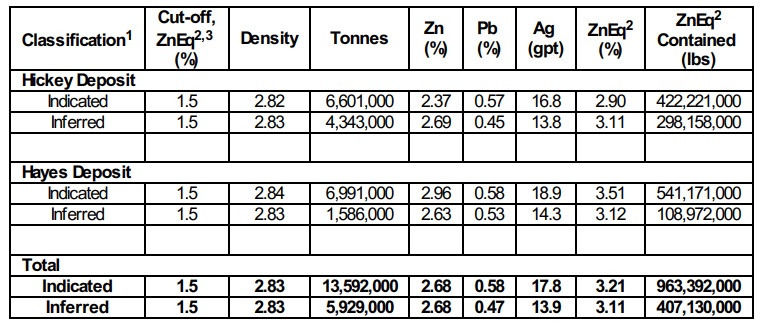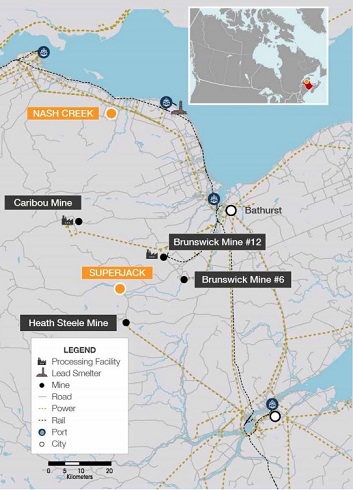Callinex Mines (CNX.V) has now released an updated resource estimate on its fully-owned Nash Creek zinc project in New Brunswick. The total resource estimate now contains 13.6 million tonnes in the indicated category (at an average grade of 2.68% zinc) and an additional 5.9 million tonnes in the inferred category (at 2.68% zinc as well) for a total zinc-equivalent content of 1.37 billion pounds.

Although Callinex used a lower cutoff grade of 1.5% zinc-equivalent (compared to the 2% ZnEq cutoff grade in the previous resource estimate), the total zinc-equivalent grade barely decreased. Whereas the previous resource had an average ZnEq grade of 3.22% in the indicated resource and 3.14% in the inferred resource, the average grade of the new resource is 3.21% and 3.11%. In fact, the ‘pure’ zinc grade in the inferred resource has increased.

And that’s a positive development. Using a lower cutoff grade usually results in a (much) lower overall grade, but that’s where Callinex’ 2017 and 2018 drill results kick in as these seem to be protecting the overall grade. And yes, the average grade still seems to be low (2.68% zinc, 3.21% zinc-equivalent), but just like Pine Point Zinc (which was acquired by Osisko Metals (OM.V), Callinex plans to use DMS to upgrade the rock before processing it. Additionally, Callinex will include a high-grade starter pit at the Superjack deposit in the PEA. This high-grade rock would be processed at the Nash Creek facility to improve the economics and to reduce the payback period.

A PEA will be out shortly, and the results of that study will provide us with a much better understanding of the economics of the Nash Creek project. We will be focusing on the project’s capex (which shouldn’t be too high considering the excellent access to existing infrastructure) and IRR either as a standalone operation or as a satellite deposit for for instance Trevali Mining’s (TV.TO) Caribou mine. Although Callinex’ PEA will be based on a standalone operation, we still think Trevali Mining could use a Nash Creek-like project to fill its mill and blend the upgraded rock with its own Caribou ore. As a reminder, the Caribou mill has a processing capacity of 3,000 tonnes per day (1.05M tonnes per year), but only processed an average of 2,600 tonnes of rock per day in FY 2017.
Go to Callinex’ website
The author has a long position in Callinex Mines. Callinex is a sponsor of the website. Please read the disclaimer

